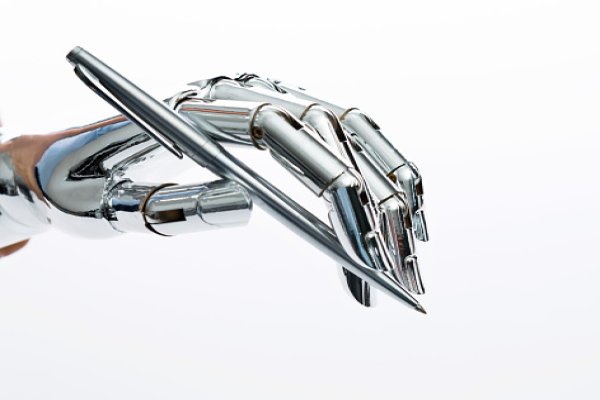Farmington, Washington, is renowned for its lush rolling hills, which have yielded profitable wheat, barley, and lentil crops for many years.
Andrew Nelson, a fifth-generation farmer, is now collecting data from various sources to enhance his farm’s bounty. This data comes from sensors on the ground, drones flying above, and satellites orbiting around. The information acquired gives him insights into daily temperature changes, soil moisture content, nutrient levels, and the health of his plants throughout the year.
Nelson feeds the data into Microsoft Research’s Project FarmVibes, a set of farm-related technologies. Microsoft is releasing these tools as open-source software so individuals in research and data science, including Nelson, an innovative farmer and software engineer, can use them to transform agricultural information into actions that increase crop yields and reduce expenses.
FarmVibes.AI, the first open-source release, is a compilation of algorithms designed to motivate the research and data science world toward data-driven agriculture. Nelson has incorporated this AI-fueled toolkit to assist in making decisions at every step of farming – from pre-planting seeds until after the harvest season.
Nelson can make use of FarmVibes.AI algorithms running on Microsoft Azure to figure out the most appropriate amount and location for fertilizer and herbicide, predict temperatures and wind speeds across his fields to make decisions about when and where to plant or spray, determine the most suitable depth for planting seeds according to soil moisture, as well as understand how different crops and practices can help store carbon in the soil.
Nelson has collaborated with Microsoft Research to use his 7,500-acre area as a testing site for Project FarmVibes.
Nelson says:
“Project FarmVibes is allowing us to build the farm of the future,”
“We’re showcasing the impact technology and AI can have in agriculture. For me, Project FarmVibes is saving a lot in time, it’s saving a lot in costs and it’s helping us control any issues we have on the farm.”
Project FarmVibes results from Microsoft’s efforts to collaborate with big companies like Land O’ Lakes and Bayer to integrate and analyze data. This project demonstrates the recent advancements in precision agriculture and sustainable agricultural practices.
Microsoft wishes to make its latest research tools accessible to the public, so they can be employed beyond Washington to address the pressing global food difficulty, according to Ranveer Chandra, managing director of Research for Industry.
Chandra pointed out that supplying enough food for the world by 2050 would require approximately doubling global food production; however, this may be hard to achieve sustainably in light of climate change and its effects, such as diminishing water supplies and dwindling agricultural land.
Chandra says:
“We believe one of the most promising approaches to address this problem is data-driven agriculture.”
Microsoft is utilizing data and AI to enable farmers, enabling them to supplement their agricultural know-how and assist in the production of healthy food sustainably.
Findings After A Comprehensive Research
Nelson’s farm had been much like many other farms around the globe, with internet inside his house but the Wi-Fi connection failing to reach outside. His 7,500 acres were completely deprived of this technology until recently.
Nelson is now taking advantage of the Project FarmVibes solution, known as FarmVibes.Connect. This system, which Microsoft plans to make available for open-source use, provides internet access in isolated and rural locations.
It employs TV white spaces – the unused frequencies that appear on television sets as “snow” between channels – to deliver broadband service. He has set up a solar-powered antenna that works like a Wi-Fi router but can cover most of his farmstead.
Due to being connected, he has gained knowledge from the FarmVibes.AI set of tools. Now, this can be found on GitHub, where FarmVibes is available.AI and includes:
-Nelson takes advantage of Async Fusion, a technology that couples drone and satellite imagery with information from ground-based sensors to generate helpful insights. Through this, he creates nutrient heat maps by combining multispectral drone imagery and data from soil sensors. This helps him decide the rate at which he should plant seeds and apply fertilizer to maximize yield while avoiding overfertilization. Async Fusion also builds soil moisture maps across Nelson’s farm, allowing him to determine the best depth for planting his seeds and the sequence of fields he should work on. Plus, it can help save his tractors and sprayers from getting stuck in muddy terrain.
– Nelson can fill in the blanks for spots he has not surveyed using a drone, thanks to SpaceEye and its AI technology which eliminates clouds from satellite images. He can then use these pictures as input into AI models that can detect weeds, helping him generate maps to only apply herbicide to the regions that require it. Furthermore, with these maps, Nelson can adjust the amount of herbicide used depending on where it needs to be applied- more for heavily weed-ridden areas and less for other sections.
– Nelson was looking for the ideal weather window to spray his wheat fields, but he didn’t trust the local forecast, which predicted conditions 10 meters off the ground. Instead, he used DeepMC to determine temperatures and wind speeds in his farm’s microclimate. The system accurately predicted a freeze that night, so Nelson held off on spraying – and he was right, as the frost had formed by morning.
-Nelson is utilizing “what if” analytics to determine the impact of different agricultural techniques on carbon sequestration in the dirt. This has allowed him to strengthen his soil and increase production. He also intends to take advantage of carbon markets, which provide financial compensation for strategies that stop the release of CO2 into the atmosphere and keep it stored in the soil.
Microsoft’s open-sourcing of its ‘farm of the future toolkit represents a significant step forward for the agriculture industry. The toolkit, which includes a range of AI-powered technologies, has the potential to revolutionize farming, enabling more efficient and sustainable food production.
By making this toolkit available to farmers and researchers worldwide, Microsoft is helping to democratize access to cutting-edge technology, which could have a transformative impact on global food security.
Source: Source



